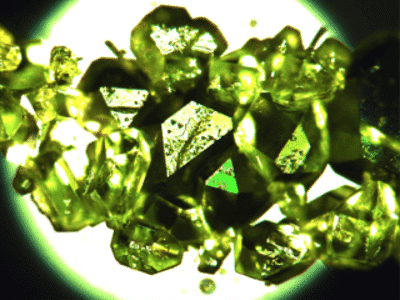

A team of researchers working out of McGill University have found a naturally occurring class of metal-organic frameworks, or MOFs, a type of porous solid that were previously thought only to exist as a lab-made material first introduced during the 1990s, which function as a molecular sponge, with applications for hydrogen storage, carbon sequestration, catalysis, gas separation, and photovoltaics.
In an article titled “Minerals with metal-organic framework structures”, published by the American Association for the Advancement of Science’s in Science Advances, the researchers have found an unexpected link between naturally occurring mineralogy found in a Siberian coal mine and lab-created MOF chemistry.
“Establishing that open MOF structures can form in a natural environment demonstrates that coordination-driven self-assembly used in creating advanced materials in the laboratory can also play a role in geological processes,” write the researchers.
The elaborate honeycomb-like structure of the structures shouldn’t exist in nature, but the researchers have chanced upon a remarkably MOF-like mineral, in a coal mine found deep in the Siberian permafrost.
MOFs are an increasingly important family of advanced materials characterized by open, nanometer-scale metal-organic architectures, whose design and synthesis are based on the directed assembly of carefully designed subunits.
This discovery “completely changes the normal view of these highly popular materials as solely artificial, ‘designer’ solids,” says associate professor and senior author of the paper Tomislav Friščić. “This raises the possibility that there might be other, more abundant, MOF minerals out there.”
In 2010, Friščić was reading a Canadian mineralogy journal that mentioned the minerals stepanovite and zhemchuzhnikovite, which had been found in Russia during the 1940s through the 1960s, but had not had their crystal structure fully analyzed.
Russian mineralogists used X-ray powder diffraction to determine their basic structure, the parameters of which sounded to Friščić like they may resemble the lab-made MOF.
Friščić and fellow researcher Igor Huskić, also of McGill, successfully synthesized the material in the lab, and then published the result in a lower-circulation Russian mineralogical journal, a fact that led a major scientific journal to reject the publication of the team’s work last year.
Through a serendipitous contact with a crystallographer in Venezuela, the McGill researchers connected with two prominent Russian researchers, Sergey Krivovichev, a professor at Saint Petersburg State University, and Prof. Igor Pekov of Lomonosov Moscow State University, who agreed to obtain original samples of stepanovite and zhemchuzhnikovite, and send them to the McGill researchers.
The samples were taken from drill cores as much as 230 metres below the permafrost surface.
Although the morphology of the lab-made stepanovite and zhemchuzhnikovite was found to be consistent with the naturally occurring minerals, it was also determined that the samples were not consistent with lab-made MOFs or for applications that MOFs are used for.
Even so, Friščić says that the discovery of MOF-like structures in the naturally occurring minerals is “paradigm-changing”, adding that if scientists had been able to make this link in the 1960s that research “might have been accelerated by 30 years.”
Leave a Reply
You must be logged in to post a comment.





 Share
Share Tweet
Tweet Share
Share




Comment